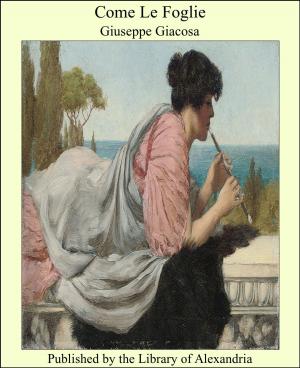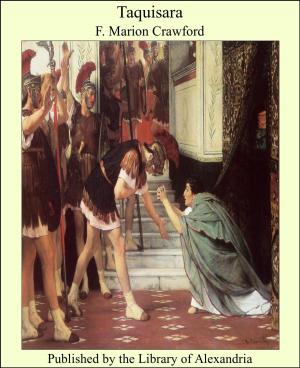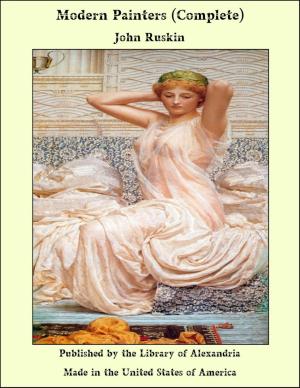The Principles of Gothic Ecclesiastical Architecture, Elucidated by Question and Answer
Nonfiction, Religion & Spirituality, New Age, History, Fiction & Literature| Author: | Matthew Holbeche Bloxam | ISBN: | 9781465609915 |
| Publisher: | Library of Alexandria | Publication: | March 8, 2015 |
| Imprint: | Language: | English |
| Author: | Matthew Holbeche Bloxam |
| ISBN: | 9781465609915 |
| Publisher: | Library of Alexandria |
| Publication: | March 8, 2015 |
| Imprint: | |
| Language: | English |
Amongst the vestiges of antiquity which abound in this country, are the visible memorials of those nations which have succeeded one another in the occupancy of this island. To the age of our Celtic ancestors, the earliest possessors of its soil, is ascribed the erection of those altars and temples of all but primeval antiquity, the Cromlechs and Stone Circles which lie scattered over the land; and these are conceived to have been derived from the Phœnicians, whose merchants first introduced amongst the aboriginal Britons the arts of incipient civilization. Of these most ancient relics the prototypes appear, as described in Holy Writ, in the pillar raised at Bethel by Jacob, in the altars erected by the Patriarchs, and in the circles of stone set up by Moses at the foot of Mount Sinai, and by Joshua at Gilgal. Many of these structures, perhaps from their very rudeness, have survived the vicissitudes of time, whilst there scarce remains a vestige of the temples erected in this island by the Romans; yet it is from Roman edifices that we derive, and can trace by a gradual transition, the progress of that peculiar kind of architecture called Gothic, which presents in its later stages the most striking contrast that can be imagined to its original precursor. The Romans having conquered almost the whole of Britain in the first century, retained possession of the southern parts for nearly four hundred years; and during their occupancy they not only instructed the natives in the arts of civilization, but also with their aid, as we learn from Tacitus, began at an early period to erect temples and public edifices, though doubtless much inferior to those at Rome, in their municipal towns and cities. The Christian religion was also early introduced, but for a time its progress was slow; nor was it till the conversion of Constantine, in the fourth century, that it was openly tolerated by the state, and churches were publicly constructed for its worshippers; though even before that event, as we are led to infer from the testimony of Gildas, the most ancient of our native historians, particular structures were appropriated for the performance of its divine mysteries: for that historian alludes to the British Christians as reconstructing the churches which had, in the Dioclesian persecution, been levelled to the ground. But in the fifth century Rome, oppressed on every side by enemies, and distracted with the vastness of her conquests, which she was no longer able to maintain, recalled her legions from Britain; and the Romanized Britons being left without protection, and having, during their subjection to the Romans, lost their ancient valour and love of liberty, in a short time fell a prey to the Northern Barbarians; in their extremity they called over the Saxons to assist them, when the latter perceiving their defenceless condition, turned round upon them, and made an easy conquest of this country. In the struggle which then took place, the churches were again destroyed, the priests were slain at the very altars, and though the British Church was never annihilated, Paganism for a while became triumphant.
Amongst the vestiges of antiquity which abound in this country, are the visible memorials of those nations which have succeeded one another in the occupancy of this island. To the age of our Celtic ancestors, the earliest possessors of its soil, is ascribed the erection of those altars and temples of all but primeval antiquity, the Cromlechs and Stone Circles which lie scattered over the land; and these are conceived to have been derived from the Phœnicians, whose merchants first introduced amongst the aboriginal Britons the arts of incipient civilization. Of these most ancient relics the prototypes appear, as described in Holy Writ, in the pillar raised at Bethel by Jacob, in the altars erected by the Patriarchs, and in the circles of stone set up by Moses at the foot of Mount Sinai, and by Joshua at Gilgal. Many of these structures, perhaps from their very rudeness, have survived the vicissitudes of time, whilst there scarce remains a vestige of the temples erected in this island by the Romans; yet it is from Roman edifices that we derive, and can trace by a gradual transition, the progress of that peculiar kind of architecture called Gothic, which presents in its later stages the most striking contrast that can be imagined to its original precursor. The Romans having conquered almost the whole of Britain in the first century, retained possession of the southern parts for nearly four hundred years; and during their occupancy they not only instructed the natives in the arts of civilization, but also with their aid, as we learn from Tacitus, began at an early period to erect temples and public edifices, though doubtless much inferior to those at Rome, in their municipal towns and cities. The Christian religion was also early introduced, but for a time its progress was slow; nor was it till the conversion of Constantine, in the fourth century, that it was openly tolerated by the state, and churches were publicly constructed for its worshippers; though even before that event, as we are led to infer from the testimony of Gildas, the most ancient of our native historians, particular structures were appropriated for the performance of its divine mysteries: for that historian alludes to the British Christians as reconstructing the churches which had, in the Dioclesian persecution, been levelled to the ground. But in the fifth century Rome, oppressed on every side by enemies, and distracted with the vastness of her conquests, which she was no longer able to maintain, recalled her legions from Britain; and the Romanized Britons being left without protection, and having, during their subjection to the Romans, lost their ancient valour and love of liberty, in a short time fell a prey to the Northern Barbarians; in their extremity they called over the Saxons to assist them, when the latter perceiving their defenceless condition, turned round upon them, and made an easy conquest of this country. In the struggle which then took place, the churches were again destroyed, the priests were slain at the very altars, and though the British Church was never annihilated, Paganism for a while became triumphant.















